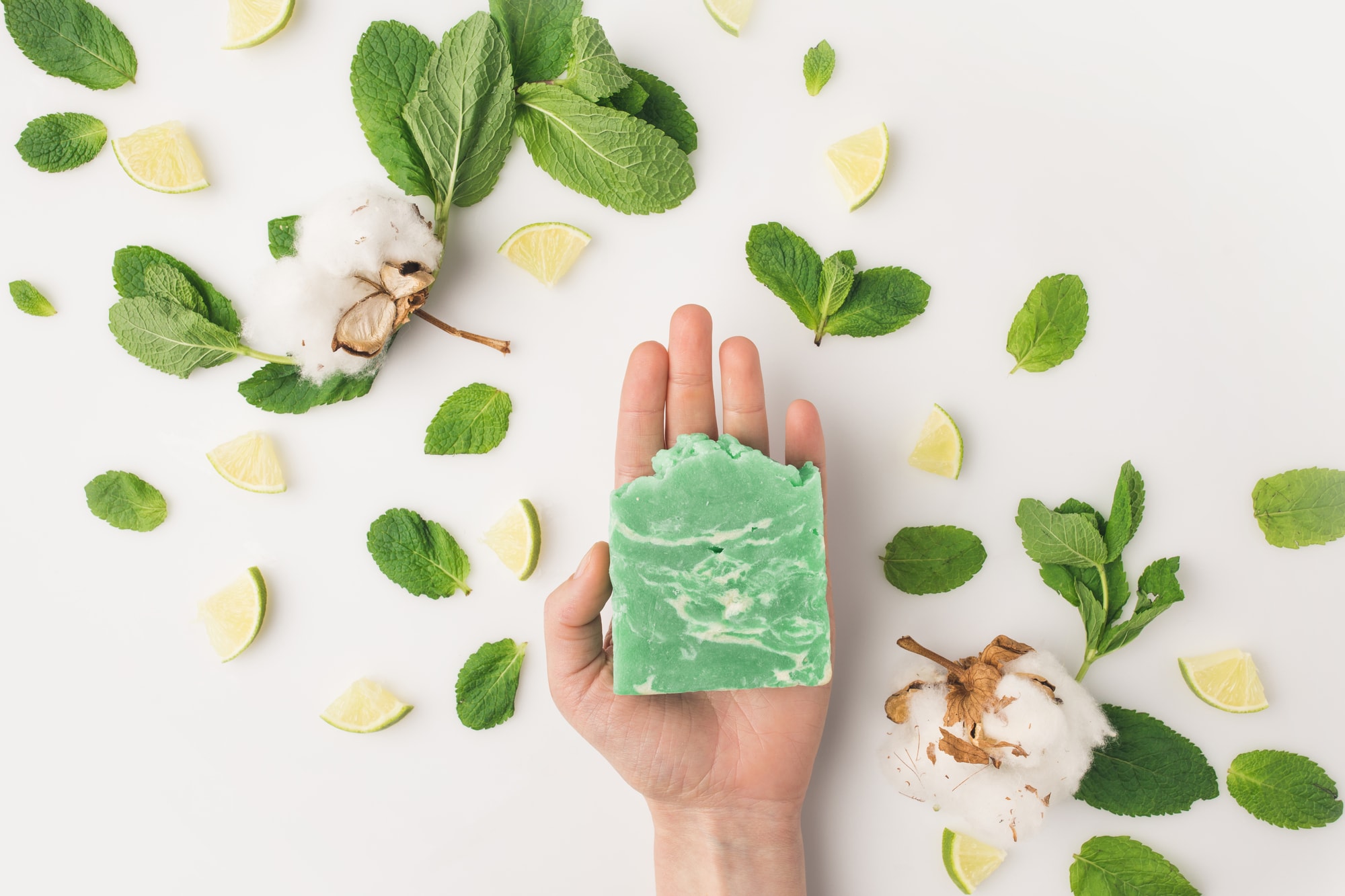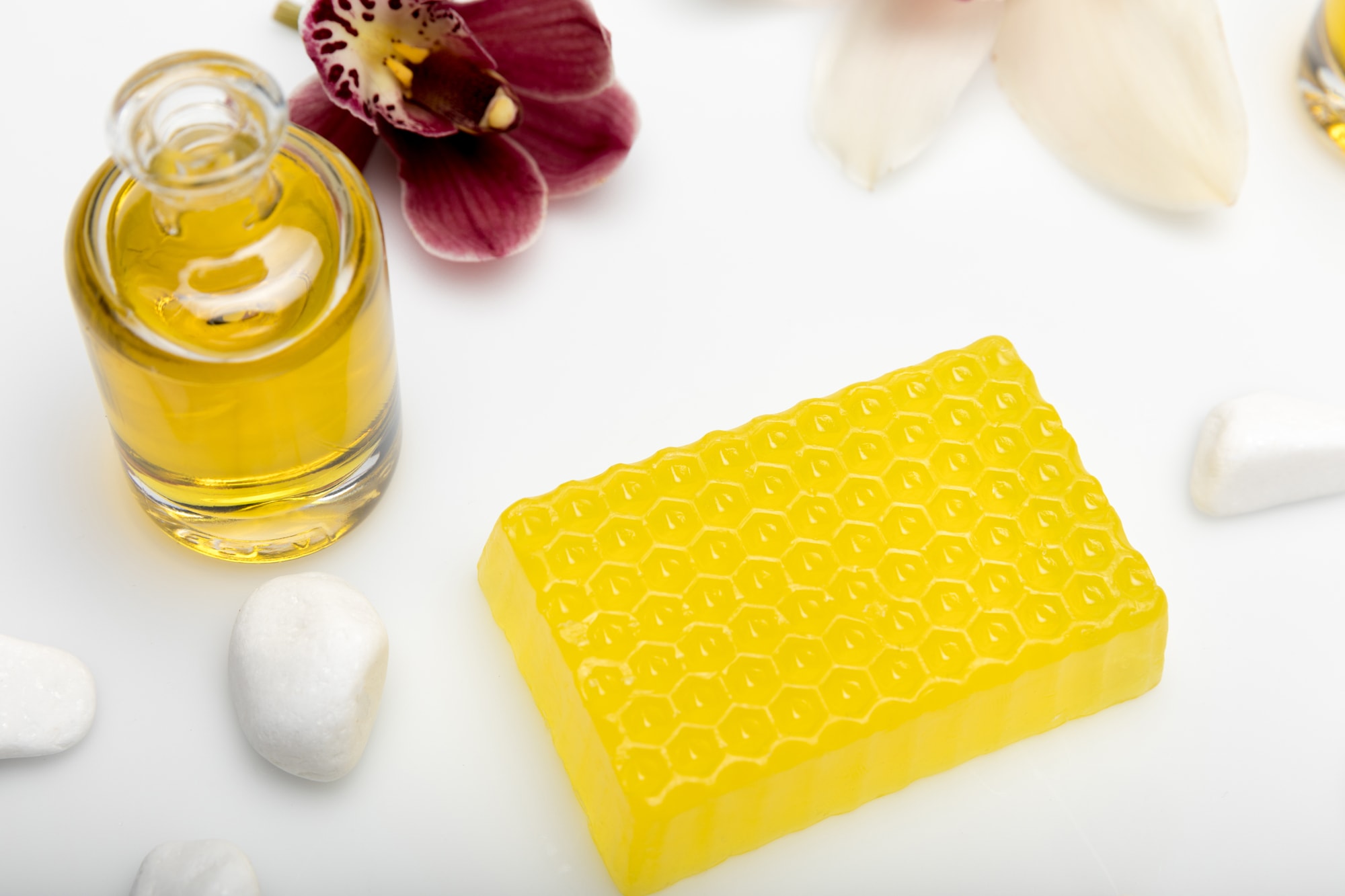Have you ever made a batch of homemade soap only to find that it has become slimy and gooey? This can be frustrating, especially if you’ve put in the time and effort to create your own soap. But don’t worry – there are several reasons why this may happen, and there are ways to fix it.

What’s The Difference Between Liquid Soaps And Bars Of Soap?
Liquid soaps and bars of soap differ in a few ways. For starters, liquid soaps most often come in plastic bottles and typically contain additional ingredients such as colors, scents, and moisturizers.
Bars of soap usually have one or two main components, wrapped in paper or cardboard packaging. In terms of performance, liquid soaps can be more thorough at eliminating dirt by cutting through grease better than bar soap, but may leave behind residue on the skin that some people find uncomfortable.
On the other hand, bars of soap lather easier than liquid soaps do because they do not require as much water to create the same amount of lather.
A bar soap can last significantly longer than a bottle of liquid soap when used sparingly. Ultimately, it comes down to preferences and what works best for each person’s needs; each type has its benefits and drawbacks.
Why Is My Homemade Soap Slimy?
Have you ever tried making soap at home and ended up with a slimy result? The slimy texture might have been a surprise, but it is actually expected! Soap-making involves the combination of a liquid such as water or milk and lye, which is an alkaline.
When these ingredients are combined, they transform into soap due to saponification – the chemical reaction of fats and oils with an alkali. This reaction creates glycerin, which is naturally slippery; this glycerin adds a slick feeling to homemade soap that is not present in store-bought soaps.
So if your homemade soap feels slimy, it’s probably for this reason – not because of any incorrect amounts used in making the soap. Let’s take a look at the causes of slimy soap bars, in a little more detail…
Too Much Lye
One common reason for slimy soap is using too much lye, also known as sodium hydroxide. Lye is a necessary ingredient in soap-making, as it reacts with the oils to create the soap itself. However, using too much lye can lead to a slimy, soft soap. This is because excess lye will not have enough oils to react with, causing it to remain in the soap.
To prevent this, it’s important to follow a reliable soap recipe and measure the ingredients carefully. It’s also a good idea to use a lye calculator, just to ensure that you are using the correct amount of lye for the oils you are using.
Insufficient Cure Time
Another reason for slimy soap may be insufficient cure time. When soap is freshly made, it needs time to fully saponify, or cure. During this process, the soap hardens and becomes milder. If the soap is not given enough time to cure, it may remain soft and slimy.
To fix this, allow the soap to cure for at least 4–6 weeks before using it. It’s also a good idea to allow the soap to air out and dry between uses, as this can help to speed up the curing process.

High Humidity
High humidity can also lead to slimy soap. Humidity refers to the amount of water vapor in the air. When the air is saturated with water vapor, it can cause the soap to become soft and slimy.
To prevent this, store your soap in a dry, well-ventilated area. You can also use a dehumidifier to control the humidity in your soap-making space.
Using the Wrong Oils
The type of oils you use in your soap can also affect its consistency. Some oils, such as olive oil, are known for creating a soft, slimy soap. If you are using a recipe that calls for a high percentage of olive oil, this may be the cause of your slimy soap.
To fix this, consider using a different oil or adjusting the amount of olive oil in your recipe. You can also try adding a hardening agent, such as beeswax or stearic acid, to help firm up the soap.
Adding Too Much Liquid
Adding too much liquid to your soap can also cause it to become slimy. This can happen if you accidentally add too much water or other liquid to your soap batter, or if you add liquid fragrances or colorants that cause the soap to thin out.
To fix this, make sure to measure your ingredients carefully and add any liquids slowly and in small amounts. You can also try adding a small amount of salt to the soap batter, as this can help to firm it up.
Not Mixing Thoroughly
Finally, not mixing the soap thoroughly enough can also cause it to become slimy. If the soap is not fully mixed, the lye and oils may not fully react, leading to a soft, slimy soap.
To fix this, make sure to mix the soap thoroughly using a stick blender or hand mixer. It’s also a good idea to mix the soap in small batches, as this can help to ensure that it is fully mixed.
What Can You Do If Your Homemade Soap Feels Slimy?
If your homemade soap feels slimy, you may be dealing with a bacteria or mold issue. Simply washing the slime off and letting the soap dry out may not be enough to prevent it from happening again.
A method that usually works is to remove the lye mixture from the mold and rinse it with water, then scrub it using a household disinfectant and store it in an area with better ventilation.
If that does not work, then you may need to completely remake the soap recipe in order for the soap to be usable again. While this can feel like an inconvenience, if proper handling of ingredients isn’t done throughout the process, then these sorts of issues can arise at any time.
Making sure all surfaces are clean and organized can help keep things from getting slimy, as well as avoid cross contamination when making various batches of soap in one workspace.

What Is The Difference Between Cold Process Soaps And Hot Process Soaps?
Cold process soaps are made by combining natural oils, lye and distilled water in a very specific way to saponify the oils. The soap is then cured for several weeks, allowing time for it to harden and develop its own unique characteristics.
Cold process soaps have a creamy texture due to the high glycerin content, which also provides a gentle cleansing action on skin.
Hot process soaps are similar to cold process, except that the mixture is heated to speed up the saponification process.
Hot process soaps tend to be harder than cold processed soaps because it has less water weight since most of the excess liquid evaporates during the heating step. However, hot processing may cause some of the ingredients’ beneficial properties to degrade.
The scent of hot process soaps may be less pronounced than that of cold process soaps. Hot process soaps are generally used to create a hard bar that holds up well in the shower or bath and has a longer life span.
Ultimately, both cold process and hot process soaps have unique benefits and drawbacks depending on what you are looking for.
Cold process soaps tend to be gentler on skin but require a longer curing time, whereas hot processed soaps have fewer fragrances and can last longer but do not provide as luxurious a lather as cold processed soaps.
Both types offer cleansing properties, but it is important to understand which one suits your needs best before purchasing any soap product.
Summary
Slimy homemade soap can be caused by a variety of factors, including using too much lye, insufficient cure time, high humidity, using the wrong oils, adding too much liquid, and not mixing thoroughly. By addressing these issues and following a reliable soap recipe, you can avoid slimy soap and create a hard, long-lasting bar.